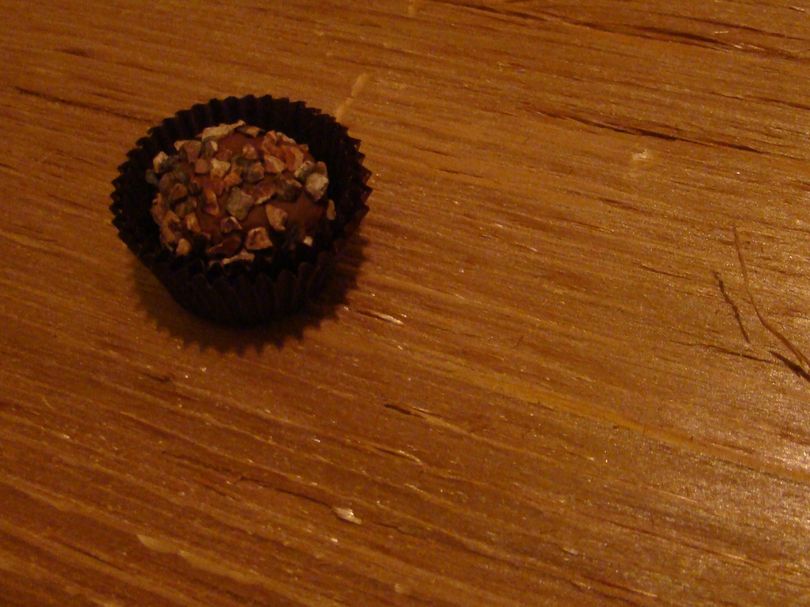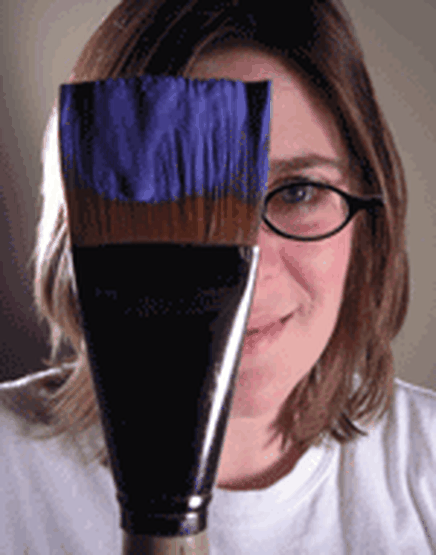Chocolate Truffles

This week Ethan and I took our first class at The Kitchen Engine (in the Flour Mill)—and we’ll likely take more. The Kitchen Engine is a local business that has become one of my favorite places to shop. They specialize in good-quality (often US-made) kitchen equipment and supplies, the staff is knowledgeable and friendly, and they have a wonderful space for classes (take a look at the schedule).
Working with chocolate is new to me, and, I’ll be honest, we were drawn in by the title and description of the shop’s Irish Cream Truffle class (who wouldn’t be?!), taught by Julia from Chocolate Myracles. Julia’s knowledge and passion for chocolate was apparent throughout the class—both Ethan and I quite enjoyed her teaching.
I had no idea how simple a basic truffle recipe really is; the basic recipe is a firm ganache rolled in a coating—not bad. The fun of making truffles comes in imagining flavor combinations and coatings.
Basic Ganache Recipe and Truffle Method:
Ganache is a simple combination of cream and chocolate. To make it, you heat cream to a boil, remove it from the heat, and pour it over finely chopped chocolate. Let it sit with the chocolate for a few minutes, then stir until the mixture is smooth. To make truffles, the ganache needs to cool to room temperature, then be covered and cooled for an hour or more in the refrigerator until it is solid.
A basic ratio for cream (or cream in combination with another liquid) is 8 ounces of liquid to 1 pound of good quality chocolate for truffles. Our class used 7 ounces of heated cream with the addition of 1 ounce of Irish Cream liquor.
Ethan and I agreed that we would bump the Irish Cream up to 2 ounces next time and decrease the cream accordingly. For the chocolate I liked a combination of milk and dark—heavy on the dark. Milk chocolate is also softer than dark, so adding some dark chocolate will make for a less delicate (read: melty) truffle. Our class used ½ milk and ½ dark chocolate, but I would use 1/3 milk and 2/3 dark. The ratio depends on personal taste more than anything.
To make your truffles, use a scoop to portion out a small amount of chilled ganache. Roll the ganache into a ball using your fingers rather than your palm; the heat of your hand will melt the chocolate very quickly. Ideally your finished truffles will be about ¾” in diameter. To finish them, simply roll the balls in a coating.
Julia also suggested putting a bit of plain melted chocolate on your fingers and rolling your formed ganache balls in a light coating of plain chocolate before placing them in the coating to help the it adhere. I liked the truffles better with the chocolate glue--they looked more finished and held onto the coatings.
More truffle combinations dreamed up by Ethan and me since taking Julia’s class:
replace the Irish Cream with: Crème de Menthe, Kaluha, Irish whiskey, Grand Marnier, or any other favorite liquor, really. Even a really good port or hearty wine would be delicious in truffle form.
Add an ounce or two of a favorite jelly or jam to the hot cream—the jam will count as a liquid in the recipe—strawberry, raspberry, sour cherry, orange marmalade, and apricot would be quite tasty. I can’t wait to try out some jam truffles! (This idea might be genius. I’ll let you know how it turns out).
For coating the truffles try coconut; cocoa powder flavored with small amounts cinnamon, cardamom, nutmeg, or allspice; finely chopped, toasted nuts; cocoa power with a sprinkling of salt or citrus salt; crushed toffee pieces; or toasted cocoa nibs. The possibilities are plenty.
We’ll be making a batch for St. Patrick’s Day!
